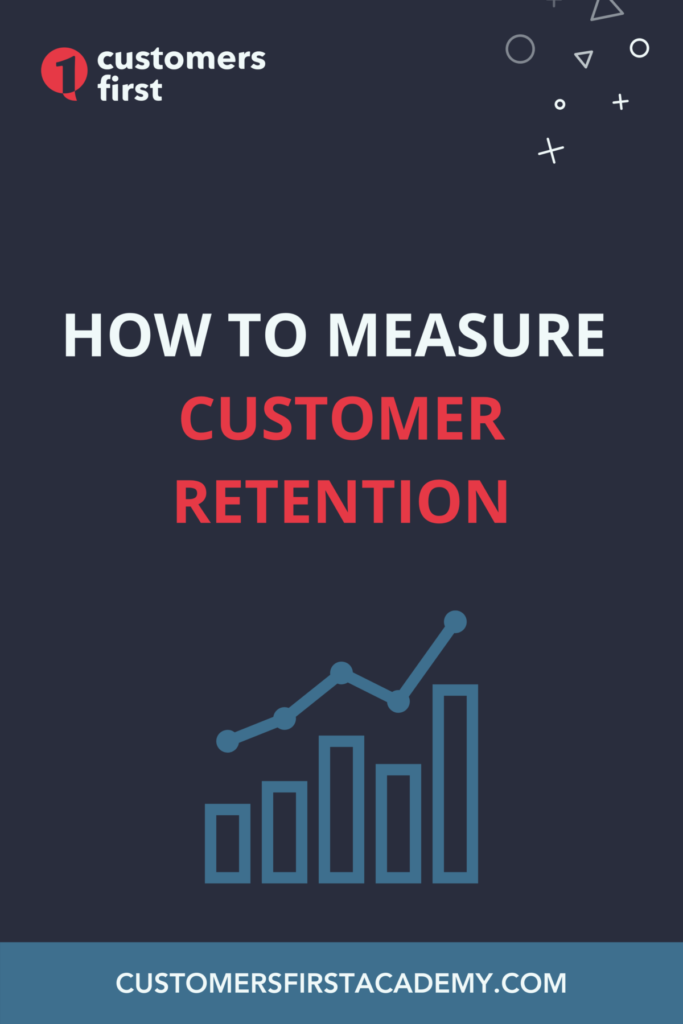How to Measure Customer Retention: Key Metrics you Need to Know
The importance of customer retention measurement is overlooked by many businesses. Marketing and sales teams focus largely on getting new customers. They easily forget about taking the same care to retain and impress their existing clients.

In this article, we look at what customer retention measurement is. We also look at practical ways in which it can benefit your business and how to implement it.
What is Customer Retention Measurement?
Customer retention refers to the ability of a business to do repeat sales with existing customers. It accounts for the capability to get new customers as well as the capacity to keep those customers.
Customer retention measurement involves evaluating the extent to which a business is retaining or losing customers. This is done by considering key customer retention metrics such as Customer Lifetime Value and churn rate. Customer retention measurement can determine how well a business is meeting customer needs. It will also reveal whether the brand is building a loyal customer base.
Why Customer Retention Measurement is Necessary for Your Business
Even your best sales team won’t go anywhere if their customer turnover is high. The cost of obtaining new customers is much higher than maintaining and growing existing accounts. According to Bain & Company, increasing customer retention by only 5% can increase your profits anywhere from 25% to 95%.
By ignoring the importance of customer retention businesses are overlooking an opportunity to generate easy money with less effort. They assume that their product and price are enough to keep customers loyal when in fact customers prize good service over price.
Building a loyal customer base also offers the following benefits to your business. Loyal customers:
- Generate referrals
- Give you repeat, long-term business
- Are prone to spend more than new customers
- Do not actively look for other suppliers
- Are less susceptible to your competition’s marketing
- Are more receptive to other products and services you offer
- Are more understanding when issues arise
- Are likely to provide good reviews
Customer service, sales, and product management can benefit from customer retention data to fine-tune their role in the customer journey. Many businesses do, however, perceive that the data required to evaluate customer retention and identify areas of improvement is hard to obtain. In the following sections, you will find out how to easily obtain and evaluate the necessary data for customer retention measurement.
Factors that Influence Customer Retention
Before you can evaluate customer retention measurement data, you have to know what data is important. The following factors play a role in the retention of your customers.
- Price
When your products or services are competitively priced customers are more likely to return. Customers who know they can get the same item somewhere else for a better price will stop purchasing from you.
- Customer Service
Good customer service is one of the most important factors to develop customer loyalty. This is multi-faceted and requires your entire business team’s commitment. Customers who have a poor experience with your business will not hesitate to find a better service elsewhere.
- Loyalty Programs
Reward programs are a great way to encourage repeat business. It offers the customer an incentive to make purchases. It makes them feel that their patronage is appreciated and rewarded.
- Site Performance
E-commerce stores that are difficult to navigate or have a confusing checkout process are likely to leave customers clicking on alternative, simpler solutions for their online purchases.
- Availability and Delivery
If the availability of products is inconsistent, delivery is slow, and shipping is overpriced, customers are unlikely to order from you.

Customer Retention Measurement Metrics
Customer retention measurement offers a way of measuring customer loyalty. Here are 5 retention metrics with which you can measure the loyalty of your customers.
1. Customer Retention Rate (CRR)
Your customer retention rate, or CRR, reflects the percentage of customers who remained loyal to your business over a specific period. Customer retention rate is important because it offers a quantitative explanation of a qualitative attribute. If your CRR is low you are losing customers.
Customer Retention Rate Formula
To calculate your business customer retention rate you need three data points:
- The number of customers at the start of a specified period (CS – Customers Start),
- The number of customers at the end of the given period (CE – Customers End)
- The number of customers gained (CA – Customers Attained)
To calculate the CRR you need to subtract CA from CE. Then divide that number by CS. Multiply the figure by 100 to convert it into a percentage.
Example:
At the beginning of the measurement period, you had 100 client accounts (CS). During the determined period, you gained 10 more client accounts (CA). Your client accounts totaled 90 at the end of the given period (CE).

The calculation to determine your CRR would therefore be:
(CE – CA) ÷ CS: (90-10) ÷ 100 = 0.8
X 100 to convert it into a %
0.8 x 100 = 80% CRR
Ways To Improve Your Customer Retention Rate:
- Keep your promises to customers and don’t make promises you cannot fulfill
- Anticipate the needs of your customers and address issues before they arise
- Set and evaluate key performance indicators to monitor the performance of your employees
- Interact with your customers on social media or through email to build relationships and inspire loyalty
- Get feedback from customers and actively address their concerns
2. Customer Churn Rate (CCR)
Customer churn rate, or CCR, refers to the ratio of customers you gain and lose soon thereafter. Where the customer retention rate represents customers retained over a period, the churn rate indicates the customer loss. A high CCR indicates a high percentage of customers lost, displaying lower customer loyalty.
Customer Churn Rate Formula
Customer churn rate is your retention rate (calculated in the previous example) subtracted from 100 percent. You can also calculate it by dividing the number of customers lost by the number of customers at the start of that period. Multiply the value by 100 to get a percentage.
Example:
If we look at the previous example the CRR was 80%.
100% – CRR = CCR therefore,
100% – (80%) = 20% CCR
3. Customer Lifetime Value (CLV)
Customer lifetime value is one of the most valuable metrics to measure. It aims to determine how much your customers spend during their customer lifecycles. When customers are loyal, they spend more, displaying a greater lifetime value.

To calculate customer lifetime value, multiply the amount an average customer spends per year by the average customer lifespan. This provides a value for how much revenue on average you could expect from every customer lifecycle.
4. Repeat Customer Rate
Your repeat customer rate is the percentage of customers that have made more than one purchase. This information should be easily trackable on e-commerce stores. To calculate the repeat customer rate, divide the number of customers who have made multiple purchases over a given time by the number of total customers for the same period. Multiply by 100 to get a percentage.
Repeat purchases don’t always equate to loyalty but it does increase the chance of a customer becoming loyal to your brand if you retain their interest.
5. Loyalty Program Retention Metrics
Customer loyalty rewards programs aim to retain customers by giving them an incentive to make additional purchases. If your loyalty program is not performing well, consider it an indication of low customer loyalty.
Redemption rate: This determines what percentage of loyalty program participants are using the rewards earned through the program. Divide the number of rewards redeemed by the number issued to calculate the redemption rate.
Active engagement rate: You can also determine the active engagement rate to determine the percentage of your total customers engaging in the loyalty program. Divide the number of customers who use your loyalty program by your total number of customers.
While this isn’t an exhaustive list of retention metrics and some of the metrics may not be relevant to your business these customer retention measurements will give you a good indication of customer loyalty and where to start making improvements.
Quick Summary
Customer retention measurement involves evaluating the extent to which a business is retaining or losing customers. This can be done by measuring:
- Customer Retention Rate (CRR)
- Customer Churn Rate (CCR)
- Customer Lifetime Value (CLV)
- Repeat Customer Rate
- Loyalty Program Retention Metrics
Use these metrics to identify the areas where you are losing customers and develop strategies to improve your customer service in ways that will boost customer loyalty.
Other Resources:
CustomersFirst Academy offers comprehensive customer service training designed to help you grow your skills and advance your career.
To keep learning and developing your knowledge of customer service, we highly recommend the additional resources below:
5 Key Areas of Customer Service You Need to Master
Business Strategy Guide to Customer Intimacy
A Step-By-Step Checklist for Client Onboarding
How to Build an Award-Winning Support Team from Scratch

